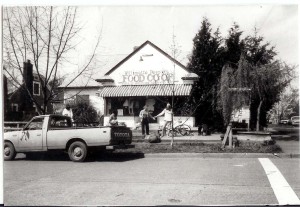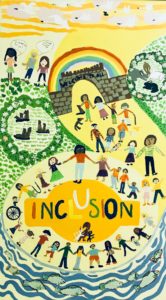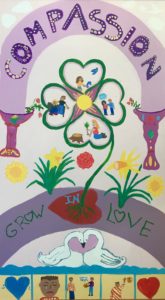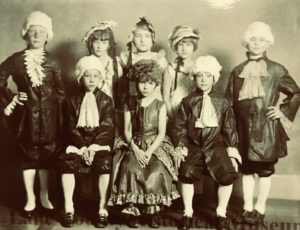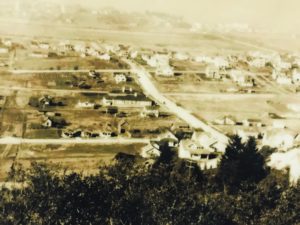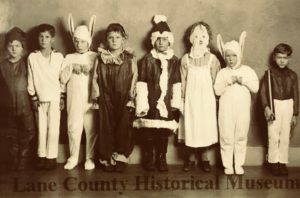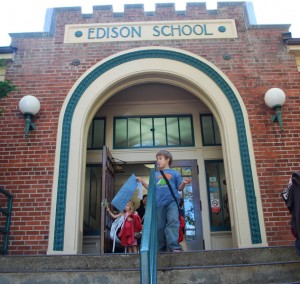 Edison School, built in 1926, has been the centerpiece of the South University neighborhood since it opened its door to 150 students. Eugene was a city of just 20,000 residents. Edison is still the oldest school building in Eugene still housing classrooms for 4J District students. While there have been, and will continue to be, renovations and improvements to the building, it’s longevity is due to its beautiful brick facade and the warmth the building and atmosphere of the school lend to the neighborhood.
Edison School, built in 1926, has been the centerpiece of the South University neighborhood since it opened its door to 150 students. Eugene was a city of just 20,000 residents. Edison is still the oldest school building in Eugene still housing classrooms for 4J District students. While there have been, and will continue to be, renovations and improvements to the building, it’s longevity is due to its beautiful brick facade and the warmth the building and atmosphere of the school lend to the neighborhood.
The Building
Eugene architect Theodore H. Gerow designed the Georgian colonial style school, as well as two houses in the neighborhood (his own home at 2065 University St., and 2182 Potter St.). The Historic school retains its architectural integrity and stately design, exemplified by the beckoning arched, recessed entry. The original building is distinct from later additions and is still easily recognizable.
Edison’s early environment, however, was quite spartan. No library, no cafeteria or kitchen, no stage or auditorium, no administrative office or nursing station. No play structures, grass or trees. the original design of the school was simple: eight classrooms forming a U-shape surrounding what today is the gymnasium. That gym area began as nothing more than a roofed-over dirt floor.
Only half the current playground was developed when Edison opened; the other half included an old house foundation. There was no paved 23rd Avenue, only a muddy road that was often impassable in the winter.
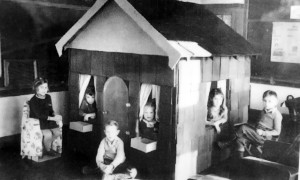
Chester Stevenson (far right) and first grade Edison classmates in 1931-32 enjoy a class project. “I was impressed, at the time, by how to put on shingles from the bottom up,” noted Stevenson in 2007.
The original classrooms were built to serve up to 40 students. By 2007, the average classroom size at Edison was 25, although that number has risen again since then. The early Edison School had six grade levels, but no kindergarten. Through volunteer efforts by the PTA, kindergarten was offers in the 1950s and then by 4J following a district wide election in the 1960’s. While kindergarten was only offered half day for many years due to district budget cuts, starting the fall of 2015 kindergarten has become a full time regular part of the entire 4J curriculum. Edison now serves students through the 5th grade only.
By the 1940’s, increasing enrollment brought the addition of basement classrooms beneath the original three wings. The gym was enclosed and given a proper flooring. The 1950’s brought even more students ready to study at Edison. To accommodate them, four new classrooms were built in 1950 in a two story addition just west of the present administrative office. Westward expansion from 1951-53 added two more classrooms as well as the library, cafeteria, kitchen, storeroom, nurse’s office and auditorium.
a final spurt of growth in the 1960’s added space to the south side of the building, creating more room for the library as well as additional classrooms. Edison reached its peak enrollment of more than 400 students during this time.
The 1970’s saw the rise of alternative schools and decline of enrollments as the baby boom subsided. With Edison’s enrollment shrinking, Eastsise Alternative School was given space in the building, which became known as Eastside/Edison School. The marriage didn’t last after Condon School closed in 1983 and boundaries were redrawn, sending former Condon students to Edison. Edison/Eastside became just Edison School again. Eastside moved to share space with the nearby Parker School (both closed now. The Parker School Property became the new home of Charlemagne French Immersion School in the fall of 2015).
The Students
Many Edison graduates still live in Eugene, including some who reside in the neighborhood. Edison’s 75th birthday (2001) drew more than 200 people, including Eugene doctor Larry Hirons and his 5th grade teacher, Herman Lawson, who had taught at Edison 50 in the 1950’s.
What was school like for past generations of Edison children?
• Judge Douglas Spencer, who attended Edison from 1929-1935 and lived in SUN until 2005, recalled “trenches on the playground” where boys turned baseball bats into guns at recess, chose sides (Japanese or Chinese, a reflection of conflict at the time across the Pacific) and “played war”. The bats were put to more standard use when Edison teams squared off for ball games with other grade school trams from the city.
• As the depression deepened, New Deal programs helped bring a daily hot dish to a makeshift cafeteria on the west side of the play shed. Student paid 5 cents for the food or received it for free if they couldn’t pay.
• Fire drills are a school routine everywhere, bout in the early days of Edison the fire alarm took the shape of a large circular saw blade from a local mill. An ax handle on a chain dangled nearby, ready for anyone to beat a warning on the blade.
•An annual PTA-sponsored school carnival was another moneymaker for the school during the 50’s and 60’s, featuring a cake walk, a ping-pomg ball toss to win live gold fish, and a variety of parent made carnival games. Jogathons have been the schoo’s main fundraiser in recent decades.
• Generations od school children made a beeline after school to the “Little School Store” just across the street, on the northwest corner of 22nd and Emerald– lots of penny candy year-round, and fast meling popsicles during the warm months. The store operated from about 1926-1970, through at least four different grocers.
•Holiday and other special celebrations dotted the school calendar. Edison children still eagerly anticipated Halloween when they paraded through each classroom to show off their costumes. Pioneer Day has evolve into an Oregon Trail integrated curriculum and a strong music program continues to delight parents and children alike with choral performances.
• A marine science curriculum for all grades is now a fixture a Edison School, culminating in ‘Ocean Week’ each spring. Women’s History Month and an artist-in-residence program also enrich the school.
Edison School enjoys a special relationship with the University of Oregon. Former Universit of Oregon president Dave Frohnmayer once said, “Edison’s proximity to the UO campus, high number of student families with ties to the university, and its strong academics encourage collaboration with students in the School of Education and with researchers in early childhood education.”
How did Edison get its name?
The Eugene School District asked the public for suggestions for the new school’s name in 1926. The overwhelming favorite was Thomas Alva Edison, the great inventor of the early 20th century.
Here is a the text from a letter sent from Thomas Edison to his namesake school:

